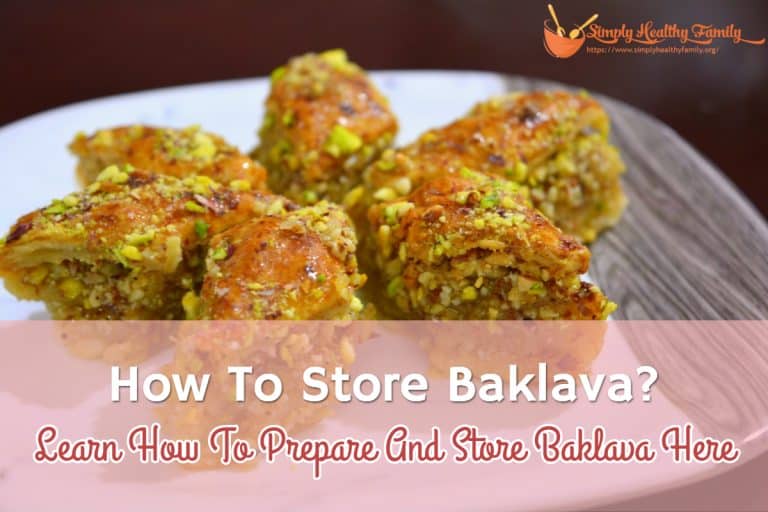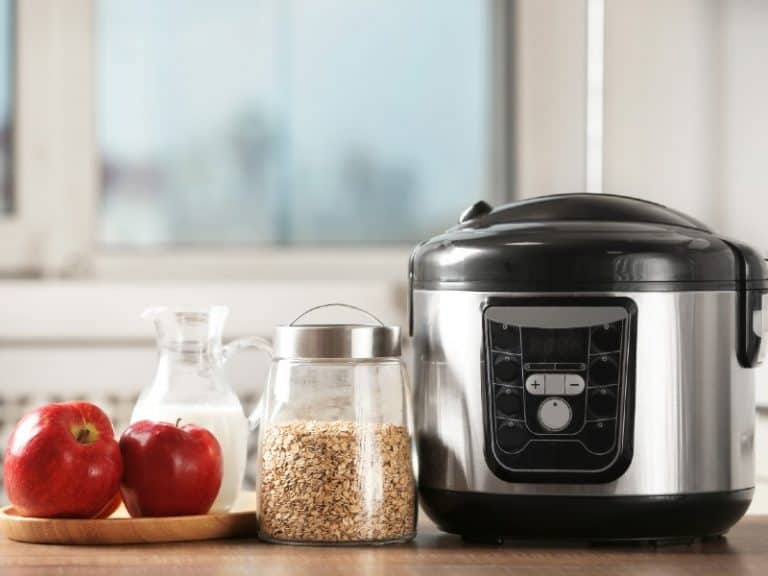5 Ways to Cook the Perfect Beef Steak – The Ultimate Guide
Ah, the joy of eating grilled meat.
The fantastic view of caramelized proteins, the fat that drips from the fresh, perfectly baked piece of meat – brown and hard on the outside, juicy and soft on the inside.
Is there something better?
Imagine the scenario: a warm, lazy afternoon, your back yard, a couple of friends, some good beverages, finest chops of steak and a perfect barbecue grill.
Oh, my mouth is watering.
Millions of people swear by this meal, and the beef steak is the king of all steaks.
There’s simply nothing better if it’s well prepared.
The process of getting this masterpiece from ground zero to the finished, ready-to-eat product requires many different factors, a lot of skill, and patience.
Today we’re tackling the topic of the perfect beef steak; with this guide at your disposal, you’ll be able to craft the finest steak ever!
Let’s begin.
About the steak

Beef Steak on the chopping board and vegetables
Since the dawn of time, when the first man put the first piece of meat into the fire, this meal was the pinnacle of culinary perfection. So simple, yet so difficult to master, the steak has proven to be one of the most respected and popular meat dishes.
Steak can be cut from many various animals, and from different areas of the animal. The technique of slicing also makes different types of steak. The basic steak is considered to be a piece of meat cut perpendicular to the muscle fibers and can include a bone or different areas of meat (separated by that same bone).
Even though the barbecue grilling is the most common way of preparing steak, there are dozens of ways to prepare it – simmering, broiling, and pan-frying, or cooking in the sauce. The original steak is grilled on the open fire, by using a metal grill.
The History Behind the Name
The word “steak” originates from the 15th Century, in the Norse-Scandinavian language. At the time, Scandinavians have used the words “steik,” “steikja,” and “Stickna” for the pieces of meat grilled on the open fire. The meat used was usually from the rear parts of animals, or from fish. There was a separate word for fish steak – “Steak-raid”, usually used for the cod meat.The latter phrases were from the English and Scottish countries during the 15th Century.

Beef Steak on the chopping board and vegetables
Where is the largest steak consumption?

Slices of Beef Steak on the chopping board and vegetables
When asked about this information, most people would think of the US as the global leaders in the steak production. If you were to think this, you’d only be partially right.
From the data of 2016 by beef2live, the US are on the fourth place on the list of countries that consume the most beef per capita. Uruguay, Argentina, and Hong Kong top the list with more beef per capita – each of these countries consumed more than 110 pounds of beef in 2016, while the US consumed 79,3.
The reason for this result is the size of the United States population.
Remember when I said you’d be partially right?
That means you’d be right to say that the US consumes the most beef in the world by amount.
By 2016 data, a whopping 11.664.000 metric tons of beef was consumed in the US.
How amazing is that!
We surely like to enjoy some good beef!
Which country has the best steak?
This question is always popular around the world, and it is very difficult to answer for several reasons. First and foremost, the one’s taste and preference will affect the satisfaction and sensation of the steak. Second, the type of steak and preparation method creates different meals, so it’s definitelydifficult to have a single answer to this question.
The World Steak Challenge was created in 2015 to answer this question, and the Telegraph coverage showcased that many countries in the world have a top-class steak. Regardless, the winner of the competition was a Wagyu cross steak from Willow Tree Farm by Jack’s Creek in Australia.

Slices of Beef Steak on the chopping board
Steak Nutrition Values

Slices of Beef Steak and asparagus on the table
Depending on the type of meat and preparation, the nutritional values of the steak can vary. Here’s the nutritional values table for the standard, grilled steak:
| | Amount per 100 grams | % of Daily Value* |
|---|---|---|
|
Calories |
271 kcal |
|
|
Total Fat |
19 g |
29% |
|
Saturated Fat |
8 g |
40% |
|
Polyunsaturated Fat |
0.9 g |
|
|
Monounsaturated Fat |
9 g |
|
|
Cholesterol |
78 mg |
26% |
|
Sodium |
58 mg |
2% |
|
Potassium |
279 mg |
7% |
|
Total Carbohydrate |
0 g |
0% |
|
Dietary fiber |
0 g |
0% |
|
Sugar |
0 g |
|
|
Protein |
25 g |
50% |
|
Vitamin A |
0% |
|
|
Vitamin C |
0% |
|
|
Calcium |
1% |
|
|
Iron |
13% |
|
|
Vitamin D |
1% |
|
|
Vitamin B6 |
25% |
|
|
Vitamin B12 |
36% |
|
|
Magnesium |
5% |
|
|
*Percent Daily Values are based on a 2,000 calorie diet. Your daily values may be higher or lower depending on your calorie needs. |
||
As you can see from the table, the steak is a caloric food, dense with protein and fat, and a decent supplier of Vitamin B complex. Not to be unnoticed is the potassium, which can impact many functions in the body, especially if you combine the meat with salty sauces and dips.
The steak supplies good amount of iron and magnesium, and it’s loaded with phosphorus (essential for body growth and maintenance – around 16 percent of daily value). Depending on how you prepare and consume it, it can be a great ally or a dangerous enemy to health and weight.
Different kinds of beef steak

Slices of Beef Steak and tomatoes on the chopping board
To an inexperienced eye, done steak is exactly what the name suggests – a steak that’s been cooked to the point when it’s edible. It may fall more on the raw side, or it may end up completely “pinkless”, but as long as it’s tasty, the nuances are not that important, right?
Hell, no. In the world of passionate gourmands, the difference between the two is as severe as the difference between life and death. They even have a word to describe the degree in which the stake is cooked – it’s “doneness”.
If you want to cook the beefsteak like a boss, there’s no way you’ll get away without learning about this paramount issue.
The different levels of doneness
Rare (125°F – 52°C)
Commonly referred to as “the perfect steak”, rare beefsteak is seared and seasoned, but only on the outside. Around 75% of steak’s center is still red, meaning that its fats haven’t got the opportunity to melt properly. If you prefer low-fat steaks such as tenderloins, that’s the way to go. If you enjoy more marbled cuts, you should probably skip this one.

Slices of Beef Steak on the table

Slices of Beef Steak on the chopping board
Medium rare(135°F – 57°C)
Medium rare steak is very similar to rare steak – it just goes a step further. With approximately 50% of red center, medium rare beefsteak’s fats had enough time to melt and distribute tenderness and flavor, but not at the expense of evaporated moisture. The final result is a tender and juicy steak with ared center and a pink ring around it.
Medium(145°F – 63°C)
Medium beefsteak is a stake that no longer contains red center. As a matter of fact, only 25% of its insides are light pink. They are still buttery and have the similar taste as medium rare steaks. They just lack the same level of juiciness due to moisture loss. After a resting period, they also get a slightly tougher texture.

Slices of Beef Steak on the chopping board

Slices of Beef Steak on the plate and a fork
Medium Well (150°F – 66°C)
This steak is cookedthroughout, and its center features only a slight touch of pink. As you would expect, the most of the moisture is gone, and the steak has a very dry feel to it. However, the cuts that pack a lot of fat may be too much for some of us. Prolonged cooking will make sure that this problem is solved.
Well Done (160°F – 71°C)
Or, how my friends like to call it – overdone. Well done steak is completely devoid of moisture, and it features a very leathery center. But, because of its crisp and tasty surface, it has a very numerous and loyal army of followers.

Slices of Beef Steak on the table
Different ways to cook beef steak
Of course, knowing the end goal makes only a part of the journey. You still have to get there, and the path you’ll take will largely determine how your journey would look like.
What this convoluted metaphor essentially means in regards to the beefsteaks, is that they can be cooked in more than one way.
Depending on the cooking technique the steak may end up with a different flavor. So, let’s quickly round up these techniques and see what they bring to the table (both literally and figuratively).

Grilled Beef Steak on the furnace bar
Grilling
Grilling has to be one of the most beloved cooking techniques in existence. Put aside the social aspect and the fact that grilling often means having tons of fun. Preparing the steak in this particular way also means that you’ll have very little chance to make a mess.
Just oil and season steak on both sides, put it on the grill, leave it there for between 3-5 minutes on each side, and that’s about it. The seasoning will last more, the meat will be juicier, and the grill flavor will be inversely proportional to the effort you’ve put into cooking.

Grilled Beef Steak on the furnace bar
Broiling
Broiling is the neglected stepbrother of grilling. It uses the same techniques, but because it’s less glamorous and doesn’t produce just as rich flavor, people often avoid it. That doesn’t mean that broiling is without its merits.
Because it occurs in the oven, you have much better control over the temperature and the heat source is above the steak meaning that the juices will have the opportunity to travel inside the meat. As for the effort, you’ll only need to flip the steak once at the three-minute mark. Check out a London Broil method.

Beef Steak on the oven roasting
Oven roasting
Though you have to use your oven for both of them, broiling and oven roasting couldn’t be more different. Broiling uses a direct, high heat from the oven’s heat source. Roasting is based more on the heat radiated by the inner surface of the oven and the hot air.
As a result, roasted beefsteak is more evenly baked, and the meat has more opportunity to soak in whatever seasoning you’ve graced it with. Because it produces very taste-agnostic results, this technique is often used by restaurants.

Beef Steak on the pan
Pan-frying
Essentially, pan-frying is not that different from grilling (everything always comes back to grilling). The only difference is that you don’t have to go outside, and yes, that implies that you won’t get those beautiful grill marks or the smoky flavor.
But, as long as you make sure that the pan is hot enough (you’ll need to do some preheating), those are the only compromises you’ll need to make. One more thing – due to the different cooking environment, this time it would be better to drop a lump of butter in the pan instead of oiling the meat.

Beef Steak on the skillet
Skillet-to-oven
This cooking technique may sound too exhausting and needlessly complicated, but believe me – if you are trying to handle a thicker steak, it might just be the only way to go. Frying would leave the center raw. Roasting would make the beefsteak too dry.
If you combine these two techniques, you’ll get the best of both worlds. Keep in mind this, though – the skillet heat should be only medium high and you should keep the beefsteak there only until it starts forming the dark crust (about 5-6 minutes on each side).
How to Cook the Perfect Beef Steak
Preparing a perfect steak is a delicate task which requires considering some important factors that will, eventually, determine the flavor and success (or utter failure) of the beef steak.
Whether your preference is a well-done steak or a juicy rare piece of meat, you should pay attention to the oil, the pan and the marinating.
Here is a more detailed guide you can follow to achieve the ultimate goal: a state-of-the- art beef steak.
1
Choosing the best frying pan
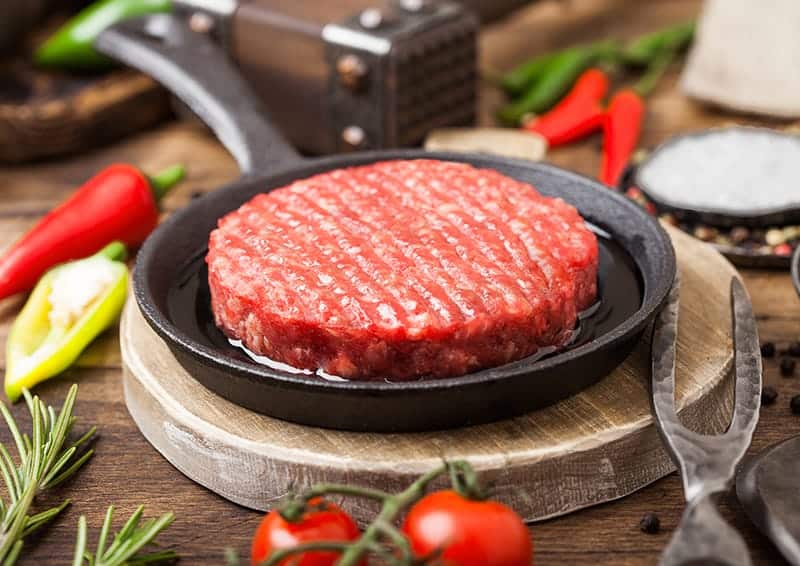
frying pan, beef steak on the chopping board, a fork and Spice
Now, if you prefer some of the methods I mentioned above (grilling, roasting or broiling), feel free to use them to cook your steak, but using a pan is very simple, and it gives great results.
The types of pans that are recommended for frying a steak are a heavy-duty frying pan with a thick base and preferably non-stick coating, skillet and griddle pan, because they get scorching hot, just enough to get that slightly charred finish on the outside of the meat.
The griddle pan is the best choice for all of you out there who can’t imagine eating a steak without those recognizable grill marks.
2
Pick an oil
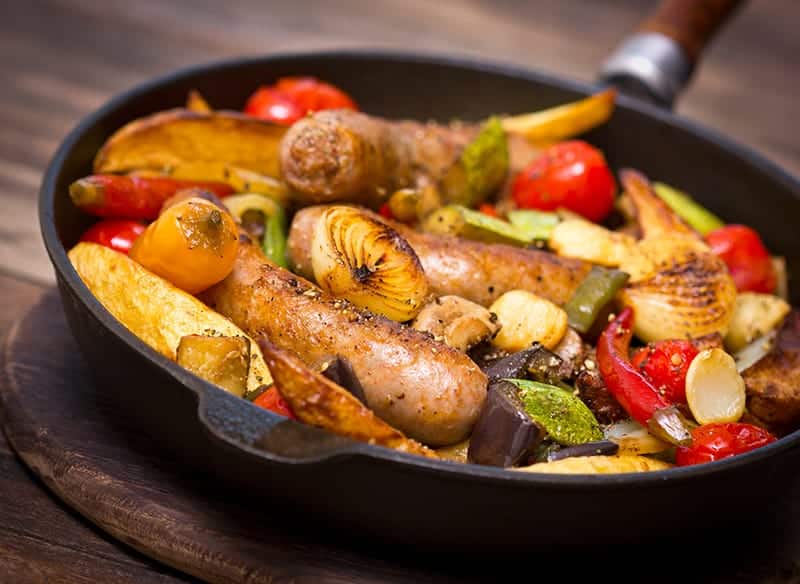
A pan, an oil, vegetables and spice
Many people tend to think that the choice of the oil doesn’t impact the flavor of the meat and the very baking process, but that is far from the truth. Gordon Ramsay, for instance, prefers to use groundnut oil, because of its ability to withstand high temperatures and mild flavor it lends to meat.
On the other hand, Jamie Oliver almost always uses olive oil. However, if you decide for olive oil, make sure you go for the top quality since some cheaper variants have low smoke points, which means they are very easy to burn at high temperatures.
Some people love to use butter for preparing the steak because it is appetizing and it creates a crisp outer crust while leaving the inside juicy. However, this technique requires watching over the meat closely and estimating the cooking time on appearance alone. Also, unlike with the oils, with butter, the meat should be cooked over a medium heat to avoid the burnt flavor.
The jury’s out when it comes to the way of applying the oil. Some chefs prefer to oil the steak before adding it in a hot, dry pan, while others love to add a splash of oil directly to the pan.
3
Marinate your steak
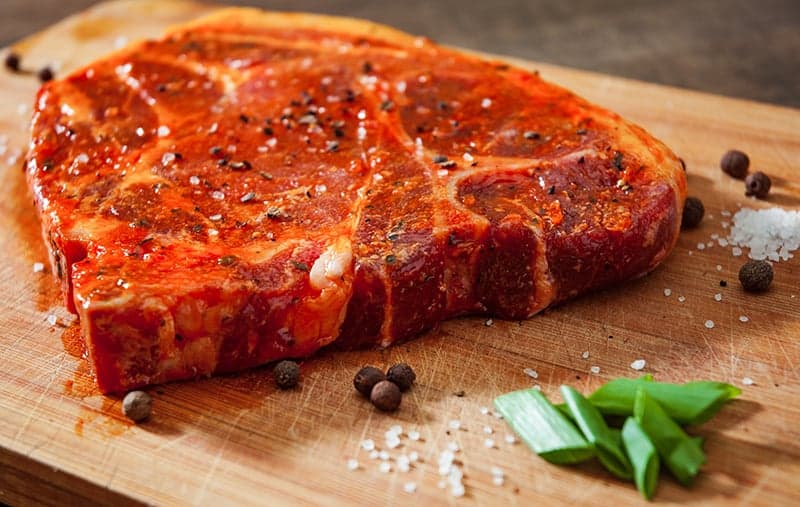
Marinate steak
The marinade is the key to a delicious steak. Of course, there will be some beef purist that will tell you that it actually ruins the unadulterated rich flavor of a quality steak and that a pinch or two of salt and pepper are all the seasonings you need.
The ideal marinades for a beef steak would be honey and mustard combo, balsamic vinegar or an Asian-style miso or teriyaki marinade. There are also some advocates of marinating the meat in yogurt. The reasoning behind this is that yogurt, with its active bacteria, breaks down the protein and makes the steak more moisture and tender.
If you prefer dry-spicing, you can try with cracked black pepper or coriander seeds. As for the salt, don’t add it too early, since it tends to dry out the meat, and that is the last thing you want. You can salt the meat after cooking, just a bit, to enhance the flavor.
4
Get Cooking

Get Cooking
Note that the process of preparing the perfect steak starts much before you put the meat in the pan. First, the meat must be properly thawed, removed from the refrigerator and left to rest at a room temperature for about half an hour (or more) before you start seasoning it.
Now that that is clear, we can move on to the cooking process. However, first, you should know what the perfect beef steak is for you. Is it rare? Medium rare? Well done? The level of steak doneness that you’re going to cook will determine the cooking temperature, but you should also consider the type, thickness, and the size of the steak.
You shouldn’t have any problems with that if you use the Grilling Chart for Different Thicknesses and Cuts for the ideal cooking time. There you will discover a detailed guide on different steak cuts and precise cooking time and temperature for each of them.
Basically, you should never go below 110°F or above 140° F. Depending on the thickness and doneness, the cooking time for a steak is between three and eight minutes for each side.
How to slice the steak?
Have you ever cooked a steak that looked fabulously juicy only to realize that it is too chewyafter? Why did that happen if your culinary technique could shame even Jamie Oliver, you might ask? Well, probably because the meat wasn’t cut against the grain resulting in meat that is very hard and unpleasant to chew.
Since it is way better to cut against the grain with a knife before you start eating the steak than with your teeth after, you should be aware of the proper meat slicing techniques.
Here are some quick tips about slicing the three most popular cuts:
- Bone-in rib eye – In this cut muscles are anchored to the bone, so if you cut crosswise to the bone, you are already slicing against the grain.
- Flank – With flank piece you should cut perpendicular to the grain (through the long fibers) and then thinly slice the meat on a bias.
- T-bone – With T-bone cut you should slice each piece on a bias, perpendicular to the bone.

Slices of beef steak on the chopping board and a knife
Essentially, different meats can be cut different ways. But what is truly important is to cut them into thin slices across the grain. This will break up the long muscle fibers that can make such cuts so difficult to chew.
Some Tips
As everything done in the kitchen, steak preparation is better if you are familiarized with insider tricks and hacks that can put your beef steak shoulder to shoulder with Gordon Ramsay’s. So, are you ready to get started? Here they come:

Grilled Beef Steak
- First, buy the best steak you can afford.
- When cutting, you should always use a set of quality sharp knives will help you not to tear or rip through your delicate cuts.
- For a tender mouth-melting beef steak experience, wrap the piece of meat in a newspaper an hour or two before cooking.
- Deciding how you want your steak will make it much easier to control your cooking as you will know when to remove from heat. Also, if you are preparing steak for guests, be aware that most people like it medium rare to well-done.
- Make sure the pan is nice and hot. You can do that by using the water test. Just pour a few drops of water into the pan; if it evaporates right away, you are good to go.
- Do not turn the meat more than once as it may result in poorly cooked beef steak. In fact, avoid touching the meat at all cost.
- Avoid flipping the meat over with a fork. Always use tongs to turn your steak if you want it to retain its precious juices. You see, when you use a fork to turn over the piece of meat, you are essentially piercing it and releasing precious juices.
- Know that tongs are not mistake-proof either. If you mash the meat with them, it will be the same as poking the meat with the fork which removes out all its juices. There is a safer way confirm is the meat ready: just gently press the steak using the flat part of the tongs. It should be soft, but not too squishy. If it is, on the other hand, hard, it means it is already too dry.
- If you are not confident that you’ll be able to spot when your steak is done, you can use a leave-in thermometer that’ll let you know as soon as your steak is ready.
- Finally, when cooked, the steak should rest at room temperature for at least five minutes before cutting and serving it. Don’t worry about it getting cold. A steak can stay warm for up to 10 minutes. During that time pure science comes into play – the fibers of the meat will reabsorb the free-running juices which will result in a moist and tender finish to your steak.

Grilled Beef Steak and vegetables on the plate
Different Sauces to Serve with Steak

Grilled Beef Steak and vegetables on the plate
Now that you know the delicate process of making the perfect steak, it’s time to learn where the magic happens. And that is – the sauces.
No matter which type of steak you’re making or how done it is, the sauce is the segment where themagic happens. A fine sauce can turn the ordinary steak into something exclusive, fabulous, and delightful.
There are dozens of pre-made sauces to buy at the local store, and I don’t have anything against them (some people can’t live without BBQ sauce), but there is another choice for you. Homemade sauces require time, resources, and skill to prepare, but they bring the best out of your steak.
The advantage of the unique, homemade sauce is that it comes from your kitchen, from your ingredients, and your skill. That means it will combine with your steak much better than a generic sauce. It’s simple as that.
Here are several perfect sauces to use on your perfect beef steak:
Béarnaise
Originally French, this marvelous sauce has found a place in thousands of recipes. The foundation of the sauce are egg yolks and emulsifying butter, the mix that usually doesn’t go together. The creaminess and texture are improved by chervil, tarragon, and white wine vinegar. Although chervil is the best flavor for béarnaise, you can use chervil substitutes for other yummy variations on the sauce.
This beautiful mix counters the meaty taste of the freshly grilled steak, creating an explosion of taste while melting in the mouth. The sauce has distinct pale yellow color with green details from the plants used and semi-sour taste. The best practice is to prepare it one hour ahead of the steak and pour it over while serving.

Grilled Beef Steak and vegetables on the plate and forks

Beef Steak and vegetables on the plate
Mushroom Sauce
This mild and juicy sauce came as one of the most popular ever and was commercialized to reach masses worldwide. But as always, the homemade stuff is always better!
The characteristic grayish color, subtle yet distinctive aroma and simplicity are the attributes of this sauce. It only takes cream, mushrooms, pepper, garlic, and salt. This means you can’t make a mistake while making it.
The thing is, you only need to be careful while picking, handling and heat treating the mushrooms. They are tender and need to be cooked to the specific point when they start releasing that familiar aroma.
Flavored Butter
Going back to basics sometimes brings the best results, don’t you think?
The flavored butter sauce is so forgiving, easy to make and affordable, that in nine out of ten times, you can make it and skyrocket the beef steak you just made.
The best thing about this sauce – you can make your own version with your combination of spices and herbs!

Beef Steak on the plate
For example, the Ms. Chungah recipe from DamnDelicious incorporates fresh parsley leaves, minced garlic, lemon zest, chopped rosemary, basil, and thyme, salt, and pepper. Nothing fancy, but when combined with room-temperature butter, it does wonders!
Serve it on the hot steak and watch it melt for a minute, and then enjoy.

Beef Steak and vegetables on the plate
Peppercorn Sauce
Adding a spicy touch to the tender, freshly grilled meat always goes a long way, wouldn’t you agree?
Peppercorn sauce is one among the most popular sauces for the grill in the world. Its texture is unmatched because of crushed pepper, and the mix is smoothened with butter, double cream, and in this particular recipe from BBC Good Food, shallot and brandy. Alcoholic drinks tend to blend well with roast beef.
Depending on how you make it, this sauce will emphasize the structure of the tender meat, and will blend perfectly with medium rare steak.
Shallot and Red Wine Sauce
Here is a sauce that will leave no one aloof. The subtle combination of olive oil, fresh shallots, red Wine, garlic, and pepper takes some time and skill to prepare, but it tingles the taste buds like no sauce on this list can.
The key lies in quality wine and oil, of course. The recipe from Food.com utilizes stock and ground black pepper, and it tastes fantastic. On the other hand, several variations emphasize different ingredients. It’s up to you to find the perfect mix.

Beef Steak and vegetables on the plate
The sauces I’ve stated here are all good to make in your kitchen and require little to no effort. We can’t discuss the tastes and preferences since every person has its own. On the other hand, with these five sauces, you can definitely hit the perfect spot and make magic happen!
Top 5 Beef Steak Recipes from Professionals
Since you now have all the elements to create your own perfect beef steak and serve it with perfect sauce, here comes the point to introduce you to the finest steak recipes from the best chefs in the world. It’s definitely worth learning from them.
You can try them, compare them with your own, and steal ideas from them to create the perfection. It’s all up to you.
1. Jamie Oliver’s Perfect Steak
One of the most famous chefs and personalities in the cooking world, Jamie Oliver knows how to impress. When preparing steak, Jamie uses hands to rub the salt and pepper into the meat, uses high-quality olive oil, and grills the meat for six minutes on each side to reach medium rare to medium, because the steak is not real if it’s not pink and tender from the inside.
Jamie rubs a half of garlic clove on the meat while grilling to achieve a perfect taste, and offers alternatives to garlic in butter and “herb brush.”

Jamie Oliver’s Perfect Steak

Source: nomnompaleo.com
2. Michelle Tam (NomNomPaleo) Perfect Steak
If you haven’t heard of NomNomPaleo, a fabulous cooking blog by Michelle Tam, Major in Nutrition & Food Science and clinical pharmacy doctorate holder. She is advocating a healthy diet through whole foods, creative recipes, and encourages people to go Paleo with her own life story of change and improvement.
Her steak recipe differs from the traditional grill-on-each-side practice: she seasons the meat and then roasts it in the oven on low temperature, and then transitions the steak to boiling pan for a quick sear. The result looks amazing! The secret ingredient – ghee.
3. Steak, the Ted Allen Way
The host of the multiple-awarded TV cooking competition series Chopped since 2009 and a food & wine expert, Ted Allen knows to recognize a fine steak. In this issue of Esquire, he demonstrated how to prepare Grilled Skirt Steak with Roasted Jalapeno Chimichurri.
The process is quite straightforward (no fancy stuff here), but the accent is on the Jalapenos, of course. They blend with bittersweet grill char and add to the texture of the chimichurri sauce. The final product is, of course, delicious.

Source: Esquire.com

Source: BBC Good Food
4. Gordon Ramsay’s Steak
One of the most popular chefs in the world, Gordon Ramsay is among the biggest names in cooking. His restaurants spread across the world, and he appeared in various cooking shows on television. He witnessed thousands of perfect and tens of thousands of bad steaks, and he won’t hesitate to let you know your recipe sucks.
His recipe, on the other hand, is based on simplicity and knowledge. You simply must know how long to grill each steak cut, because there’s nothing worse than ignorance. The perfect cut, quality oil, garlic, and herb spring. Season well, grill for a few minutes (depending on the cut you’ve chosen), and serve. Simple as that.
5. Heston Blumenthal’s Perfect Steak
Chef Blumenthal owns a restaurant in the UK that have three Michelin stars, a feat that not many restaurants can get. He advocates the scientific approach to cooking, and it got him some tremendous results over time. When he says something about steak, you should listen.

Source: sbs.com.au
Side Dishes to Serve With Steaks
Once you have mastered the preparation of the perfect steak you will have to make a side dish will match the deliciousness of that juicy and decadent piece of meat. Some people may argue the need of having a second dish when the steak is already giving you all those amazing flavors, but side dishes are great for enhancing those flavors and balancing the ingredients.
Potatoes
![]()
Beef Steak and vegetables on the plate
Potato is the king of the side dishes, and not only when it comes to steak. Here are some of the most beloved recipes to serve with your perfect steak:
Traditional chips:
Nothing beats the classic crispy chips, but if you are feeling a bit “cheffy” you can deep-fry the potato chips and use the same oil for onion rings too. Extra tip: for the best deep-fried potato chips leave the potatoes to soak in salty water for at least 30 minutes prior to frying. Also, the oil in a deep-fryer should be heatedto 365 degrees.
Sweet potato fries:
For a lighter version, try oven baking sweet potatoes. The delicate sweetness of the potatoes will balance the weight of the beef steak perfectly. If you want to neutralize the sweet taste a bit, add some savory ingredients like garlic, cayenne, thyme or pepper. If you don’t mind the sweetness, you can bake them with no seasonings at all. A drizzle of olive oil will be enough.
Potato salad:
A light and flavorful take on the steak side dish, potato salad is ideal for spring and summer suppers. Skip the retro (and caloric) mayonnaise and drizzle your salad with vinegar and olive oil. To enhance the flavor you can add chopped onion and parsley, and even mix in some mustard with the oil.
Mashed potatoes:
The creamy texture of the mashed potatoes will complement the red meat, and the two will make a perfectly happy marriage when they reach your taste buds. Add some pizzazz to the traditional mashed potato recipe with some garlic, mustard or horseradish. A reminder: choosing the right potato variety is the key for fluffy mashed potatoes. It is always best to go with starchy potatoes like Yukon Golds or Russets.
Baked skinny fries:
Fries and steak are a match made in heaven, but if you are concerned with a number of calories these two pack together, you can bake the fries in the oven. Don’t forget to give your taste buds an extra punch by coating the fries in seasonings like paprika and garlic powder.
Extra Side Dishes
Potato isn’t the only side dish that can match the glory of a beef steak. Here are a couple of more steak companions to consider:

Beef Steak and vegetables on the plate
- Tomatoes: Grilled tomato halves are a steakhouse classic, but many people stay clear of them because some tomatoes tend to fall apart while on the grill. That won’t happen if you use firm tomato varieties like Early Girls. Now, all that is left for you is to bring out the sweet flavor with a splash of vinegar.
- Cheese and chive slaw: Cheese (especially cheddar) and steak? What a combo! Mustard and mayonnaise will add that extra flavor you’ve been searching for, but in order to use them to their fullest potential, you will need to mix the slaw with your hands so that every bit of salad is covered with the delicious dressing. Of course, serve cold.
- Mushrooms: Another traditional accompaniment of the beef steak. There are various ways to prepare the mushrooms as a side dish. Try them devilled, sauteed, roasted or with cream. Or, you can stuff them with garlic and ricotta and then grill them. Other creamy cheeses, like some of the substitutes for ricotta, would also taste great with mushrooms and beef steak.The possibilities are endless with this magical ingredient.
- Peas: Sure, you can experiment with exotic side dishes, or you can just take it back to the old school and serve peas. Although cooking peas is essentially quite simple, it does have its tricks and hacks. Traditionally, they’re cooked in salty water, but if you ask Jamie Oliver, you should mix a half glass of white wine, half glass of water and two knobs of butter and pour over the peas to cook.
- Side salad: Here’s a probable scenario: It’s summer, it’s hot, and you don’t want to add anything fried to your cooked steak. Luckily, you can keep it minimal and go for a classic watercress or flat-leaf parsley salad. Or just forget about all the rules of perfectly sliced steak and serve your steak and chips in the salad.
- Onion rings: Here’s a surprising fact – one of the most-searched for terms on the BBC Good Food site on Valentine’s Day 2012 was ‘onion rings’. But it doesn’t surprise us since we are all head over heels for this tasty and crispy side dish. Now, if you want your onion rings to come out perfect, you should freeze them completely before coating them in flour, cornstarch, baking powder, baking soda and paprika (to taste).

Beef Steak and vegetables on the plate
Common Questions
- 1. WHAT IS “PERFECT” STEAK?
- 2. Is it safe to eat rare steak?
- 3. When do you put salt on steak?
- 4. Should we let the steak come to room temperature before cooking?
- 5. What is the best way to thaw frozen steaks?
- 6. How should I prepare the meat before cooking?
- 7. How long should I store it in the fridge?
- 8. What are the best cuts for the way I like to cook?
Asking this question is like asking different persons about their favorite colors. The tastes vary, and while some people prefer rare steak, others would be appalled at the mere sight of a still bloody piece of meat and settle for nothing less than medium.
However, there is a consensus that medium rare offers the best of both worlds. Cooking the steak anywhere past medium or heaven forbid, well-done, would dry out the meat and make it tough. Medium rare steak provides the maximum tenderness and juiciness, while still having a warm center of the steak and evenly distributed flavors. Still, if you prefer medium steak that is also a legitimate choice.
Some people definitely indulge in rare steak, but since all food surfaces carry bacteria, especially raw meat, how safe can that be? The meat cooks from the outside in, so the outer surface is exposed to higher temperatures longer than the inside meat.
Lab tests looking on food safety risks have shown that steaks, even when pierced, are safe only when cooked to medium-rare doneness (145°F/63°C). It is also recommended that the steak is flipped more than twice to evenly distribute the heat while cooking.
Since your senses may be misleading, the best way to check the steak doneness is a food thermometer. Bottom line, even if genuinefoodies sometimes prefer rare steak, no one can guarantee that it is safe. This also implies that gourmet dishes like steak tartare are also potentially unsafe.
You can read a dozen cookbooks or ask for tips from a half dozen celebrity chefs, and you will probably come across many different responses to when you should salt your steak.
Some opt for salting the meat immediately before putting it in the pan. Others claim that it is best not to salt at all and instead they advocate salting the pan and putting the meat directly on top. Others, however, insist that the meat should be salted and left to rest for up to a few days in advance.
Who’s right? The most believable theory is that the salt dries out the meat, so you should salt the steak immediately before cooking or after the steak is already done.
Of course, the meat should be properly thawed before the cooking, but one of the frequent tips says that it should also be left to a room temperature. Although there is some reasoning behind this theory, the risks outweigh the benefits.
This practice creates unnecessary food safety risks, so the final answer to this question is NO, you shouldn’t let the steak come to room temperature. Instead, keep it refrigerated before cooking.
Speaking of thawing, some advocates of the helter-skelter thawing approach will tell you that you can defrost the meat in hot water in a matter of minutes, but the truth is that beef and lamb are best thawed in the fridge. The hot water method causes bacteria growth and loss of color and flavor.
You should avoid thawing meat at room temperature since it encourages bacterial growth. This happens because the outside will defrost before the middle, particularly in high temperatures. Steaks usually take about 12 hours or overnight to defrost in the fridge, depending on your temperature settings, so patience is required.
If patience is not an option you can use the microwave on defrost setting, but you will have to cook the meat immediately.
Many steak recipes suggest that you should bring the meat to room temperature before grilling, but that is a question we’ve already addressed above. Of course, you should make sure that the meat is properly thawed so that the heat can penetrate the middle of the meat as efficiently as on the outer sides.
Certain cuts may require a marinade to help tenderize the meat and add a richer flavor. The best way to marinate the meat is by placing it into a sealable sandwich bag, pouring oils and seasonings, squeezing the air out of the bag and massaging the ingredients into the meat. Once you seal the bag, you can leave it in the fridge for a couple of hours.
Should it be kept in the freezer or refrigerator? Is it best store it in airtight containers or plastic bags?
All these questions require gathering some knowledge about the meat both when it’s raw and cooked, or you may learn the hard way that you’ve been storing that frozen beef incorrectly for way too long. Essentially, raw beef steak can be kept in the freezer for 6 to 12 months, and in the refrigerator for three to five days.
The proper way of packing the meat for freezing is in an air-tight aluminum foil, freezer paper, plastic wrap or heavy-duty freezer bag. When cooked, steak can stay good in the refrigerator for three to four days, and in the freezer for about three months.
This is super important. Not all cuts are made the same, so not all of them will turn out the same when grilled, broiled or pan cooked. If you want to make asteak, but are planning on stir-frying, the butcher may suggest something different than what you’ve planned.
You would be surprised just how much money can you save by simply asking you butcher for advice. So, before you go ahead and buy anycut, you can think of asking your butcher what grade of meat should you buy for that specific dish and what are the best cuts for it. Also, it wouldn’t hurt to ask are there any requirements for preparing the meat (e.g. tenderizing it in a marinade).
For the Love of Well-Grilled Meat
We’ve reached the end of this guide where I covered every aspect of grilling the perfect beef steak. It was a long ride for sure, but now you know every detail possible, every trick in the book, and all answers to the questions you can possibly have.
Now it’s time to get yourself a fine cut and fire up the grill.
Enjoy!


